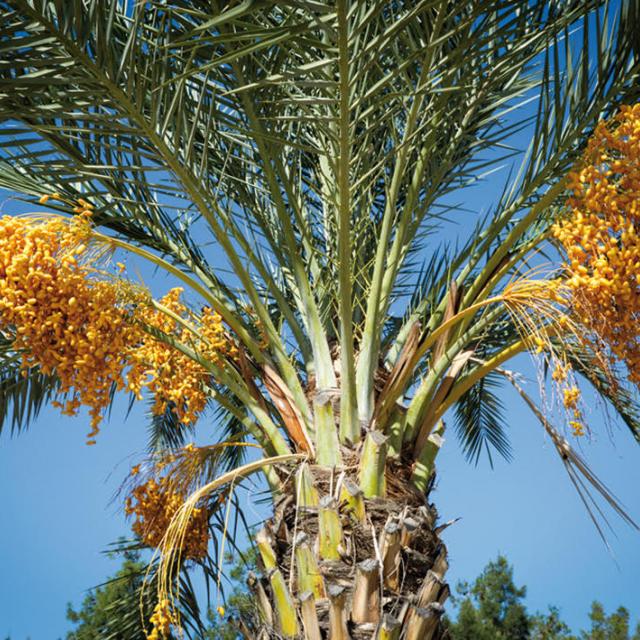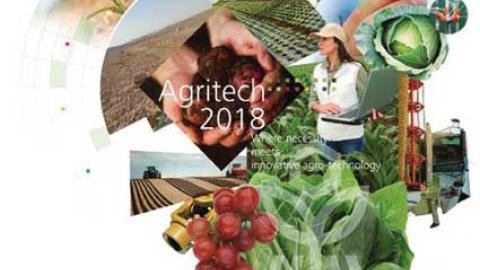This crop has been cultivated by all of the ancient and modern civilizations in an area extending from the Mediterranean Basin to the Red Sea, early records showing that date production was established in Iraq almost 3,000 years ago.

The intended purpose of this article is as follows. I would humbly like to tell you about the cultivation of Date Palm trees (Phoenix Dactylifère), the irrigation and the production of a crop that is not so well-known in the West but is very common on the southern side of the Mediterranean Sea. Date Palms are mainly grown in arid and semi-arid regions, these being the places where most of the world’s production of dates has been developed.
The world consumption of dates has increased so much that it is expected that 30% more will be produced in 2025 than in 2018.
The most common Date Palm varieties grown in North Africa
Firstly, it is important to establish the variety of date palm that is going to be planted. This choice depends on the region where the plantation will be established. On the other hand, the popularity and preference for the use of each variety of Date Palms can change according to the markets of the region in question.
Generally-speaking, the most popular are:
• Mejhool.
• Deglet Nour.
• Boufeggous.
• Nadja.
• Bousekri.
A Brief introduction to the propagation methods
• Seed propagation,
• Offshoot selection.
• In-Vitro (tissue culture) Propagation
The main concept that we should consider here, before purchasing one variety of Date Palm or another (Phoenix Dactylifère), is to ensure that all the plants should:
• be free of Date Palm diseases, e.g. Fusarium Oxysporum (Bayoud Disease)
• survive transplanting 100%
• have rapid growth and a good production rate
• need less water than the cuttings (offshoots) because of the establishment of the rooting system in the laboratory.
• be easily transportable.
The most efficient method is In-Vitro Propagation. It is also the most expensive method, but it is absolutely vital for achieving the success of the plant.
How can we cultivate the date palm and develop a profitable market without causing any harm to the environment?
• It is very simple, by controlling all of our crops’ production stages.
Irrigating the date palm
Given the constant increase in the population, we should use the water resources more efficiently and the agricultural sector has a vital role to play. The only way forward to ensure development is to use just the right amount of water and fertilisers required by the crop at any one time. Furthermore, at the same time we should also achieve more production!
What is the trend for irrigating the crop? At the present time, there are many regions where flood irrigation is the most commonly used system. This method, which is harmful to the environment, must be replaced by a more sustainable system, such as drip irrigation. This is a simple method, taking the water exclusively to the rooting zone and it is the only way of meeting the water requirements of the palm trees and controlling water-usage while increasing production.
First steps for calculating the plant water requirements of our date palms. Firstly, it is very important to make an accurate calculation of the climatic and agropedoclimatic parameters of the surroundings of the production site. This would facilitate the exact measurement and control of all the parameters that affect our crop, such as solar radiation, humidity, temperature, soil texture and precipitation rate or rainfall.
The factor that determines the irrigation run time and amount of water applied is evapotranspiration. This is the key to determining our palm trees’ water requirements, and in this respect, we should establish the quality of the water, soil type, soil and water salinity, temperature, etc.
After having calculated the amount of water (mm) required per day, during the day of peak water demand, we have to apply a leaching coefficient. Here, we will increase the irrigation run time to wash the salts out of the soil, this coefficient varying according to the crop and water quality. When applying the leaching equation to date palm trees the result is 6.8 dS/m (Ayers & Westcot. 1976).
Generally- speaking, leaching represents 10-30% more irrigation run time. The standard water requirements for Date Palms are around 60-70 m3/tree/year during hot periods in the Errachidia region (Morocco) and 85-95 m3/tree/year in Saudi Arabia.
The inevitable increase in the consumption of dates and the cultivation of a crop that has very demanding water requirements will not be viable in the long-term without a sustainable method of irrigation.
A number of studies have already been conducted into the use of a localized irrigation technique with the Phoenix Date Palm. This irrigation system has achieved very good results regarding production and saving on water, reducing water consumption by more than 50% with a 100% increase in production, the yields rising from 50 kg per tree to 100 kg per tree.
In the following volumes of this chain of articles covering the Phoenix Palm Trees, we will be discussing the design of a plantation pattern, for example, with intensive spacing of 7 x 7 m; other localized irrigation models that could be developed in the arid lands; the water requirements of the crop of Phoenix Palms; and surface and subsurface drip irrigation systems.
Design of a drip irrigation systemfor date palms
What are we looking for when choosing one irrigation system or another for our date palms?
We should think towards the future, vis-à-vis the number of solutions offered to us by technology in order to preserve this planet.
Thanks to our Moroccan partners, I have been able to witness for the first time the intensive cultivation of date palms. This partner showed me how to draw up a simple design of a standard 5-hectare irrigation system, with a good filtration system, self-adjusting dripper technology with a high flow rate, and obtaining the supply of electricity from solar panels. I learned how to draw the water from a borehole or well or pump the water from a reservoir to the field. This is a truly magnificent project.
Data base for the agronomic design
of an irrigation system
We are able to calculate the water requirements of the palm trees in an arid region at the time of peak water demand (June to August), by using the Penman-Monteith equation. We now have an average amount applied in a non-stress situation of 51 m3/tree/ year.
As I already explained in the first article, it is necessary to monitor the weather conditions in order to obtain the reference evapotranspiration value (ETo) and then, by using a crop coefficient (Kc), we can determine an evapotranspiration coefficient for the crop (ETc), etc. These parameters are very precise, and the Penman-Monteith equation is used for this (Allen et al.. 1994).
However, I would now like to concentrate on the movement of the water in the soil because this can change noticeably from one type to another, for example, between a clay soil and a sandy soil. The role of the soil type in the availability of water in the soil is going to affect the duration and frequency of the irrigation.
Clay soils are much more compact with very low permeability and, as the water lies on the soil surface for quite a long time, there are greater losses caused by evaporation. On the other hand, sandy soils have large pores so the irrigation water applied passes to the lower layers very quickly, also resulting in a loss through percolation.
How to supply the whole of this amount of water to each tree with the use of a small borehole? We have two methods and I am going to illustrate them by using two real examples. The first is the Surface Drip Irrigation Method, designed in Morocco as an irrigation system for 5 ha.
• The water is drawn from boreholes sunk to a depth of around 80 m. Using the power from two solar panels, the water is sent to a reservoir with a capacity that varies according to the surface area (to be irrigated) and the weekly irrigation requirements.
• The filtration head, consisting of a sand filter capable of filtering around 20 m3/h of slightly muddy water.
• A 50 m3/h pump with a manometric head of 20 m for flat fields.
For the first year’s date palm production, two tubes per row of crop are installed with 4 Button drippers per tree.
• The flow rate of each emitter will be 25 l/h and the total flow rate is 100 l/h.
• The spacing for this layout is 8 x 8 m.
• The irrigation run time is 2 hours every 3 days (twice a week).
The second method is the Subsurface Drip Irrigation (SDI) system. Subsurface drip irrigation has several uses:
• preventing the development of weeds.
• avoiding the evaporation of water on the surface of the crops.
• deterring intrusion from animals such as rabbits, foxes and others that may be looking for a source of water during the dry season and thus stop them gnawing the pipes.
• But one of my favourite features is the delivery of the water and fertilisers precisely to the root zone. With this type of irrigation, we are able to control exactly the quantity of water and other inputs to be applied to our palm trees.
Therefore, it is not only necessary to know how to install and handle this type of irrigation. To enjoy all the benefits of this system, it is also necessary to complement the irrigation system with the following components:
• soil sensors, for measuring precisely the water requirements of the date palms: irrigation begins when there is no moisture in the soil and stops when the wet bulb reaches the sensor, which we place at a depth where the water-absorbing roots are present.
• pulse water meters in the hydrants of the irrigation zones
• an efficient fertigation system. This is necessary for controlling precisely the doses used, either for the application of acids or herbicides, several times per season, to prevent the clogging of the drippers or the intrusion of roots looking for water when our trees are suffering from water stress.
• a filter head, essential for being able to control the particles that could clog the drippers.
The palm trees have a rooting system with many root branches, i.e. these roots spread out according to the water requirements and nutrients in the soil.
Thus, we are able to have a spacing of 7 x 7 m to increase the production area, with an area of application of 3.5 m, using a subsurface drip irrigation system with the laterals buried at 35 cm to avoid evaporation at less than 20 cm and a distance between emitters of 40 cm and a flow rate of 3.5 l/h.
Conclusion
In terms of the saving, efficient water use and sustainability, the best water regime is an application of 60, 100 and 80% of the maximum evapotranspiration for the winter, spring and summer periods respectively.
The controlled deficit irrigation technique, therefore, allows for greater efficiency in the use of water for the date palm. Thus, the strategy of inducing a controlled plant water stress contributes towards the rationing of the water applications and consequently the sustainability of the oasis, aquifers, rivers, etc.
However, my experience of using subsurface drip irrigation systems on other crops in different countries, applied to the crops of date palms in the rather arid regions along the Mediterranean coastline, have produced spectacular results and, in my opinion, this represent a more efficient, sustainable and economic future for agriculture in North Africa.

